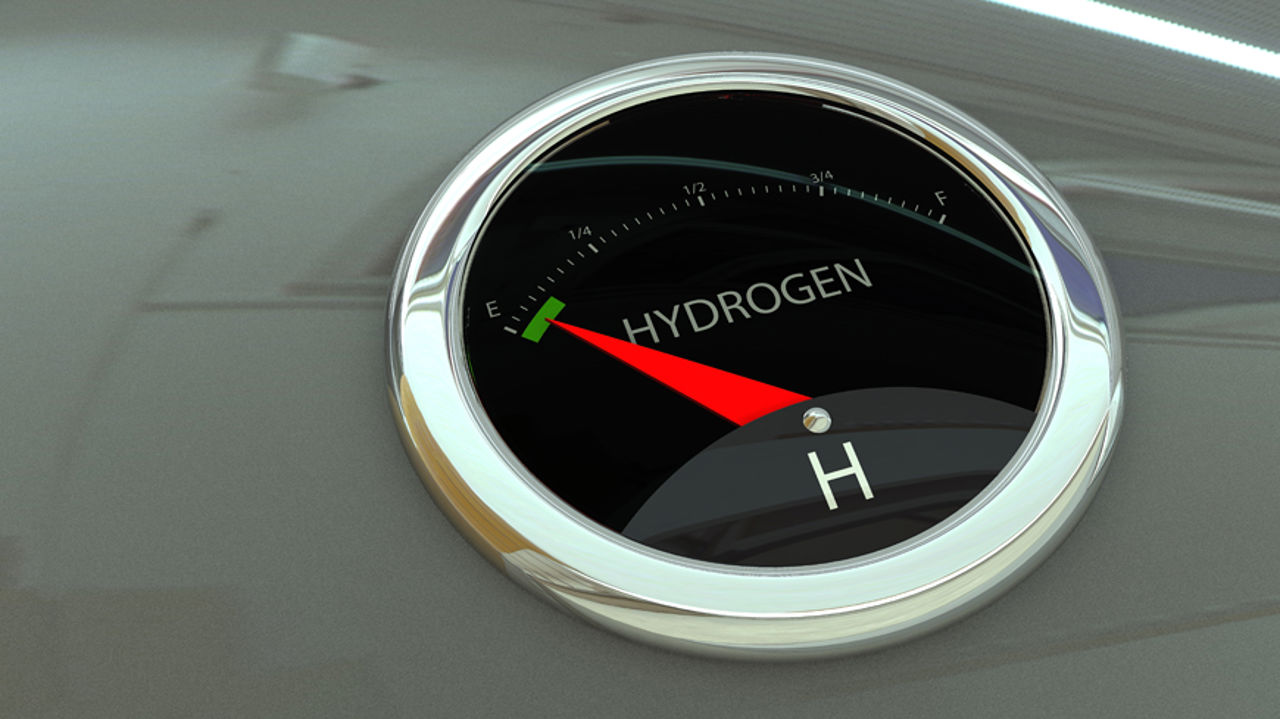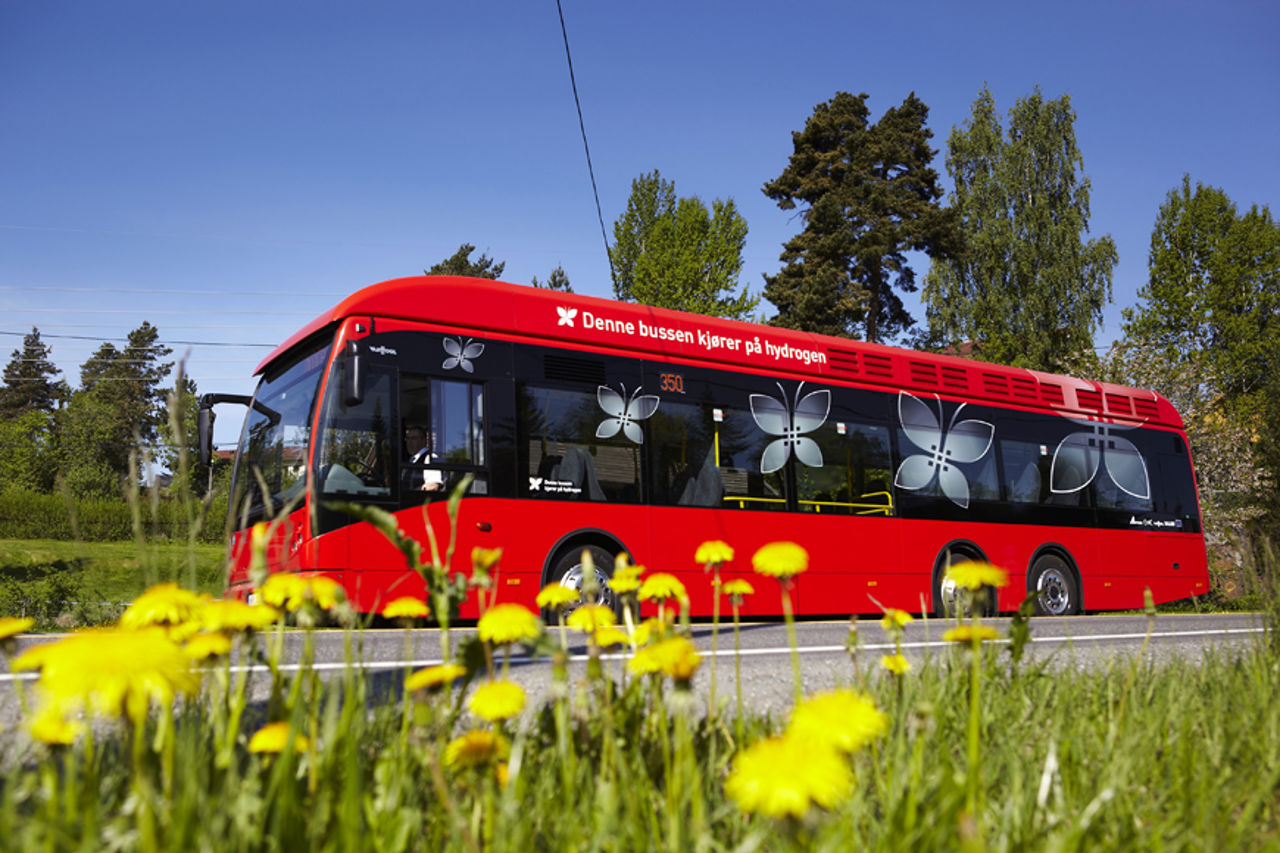
Hydrogen and renewable energy sources complement each other.
Hydrogen: A light gas for heavy-duty tasks
Battery power works fine for passenger electric cars, but if trucks, buses and ships are to be electrified, fuel cells and hydrogen are probably a better alternative.
When not just private vehicles but also buses, trucks, ships and planes are to run on some form of renewable energy rather than fossil fuels, we will need to find other alternatives because today's battery technology is simply not efficient enough.
"Electric power has traditionally been used largely for stationary purposes; for lighting and heating homes and offices or for industrial processes. If we want to replace liquid fuels from fossil sources in the transport sector, we need to have electrical power that we can take with us," says Ulf Eriksen, head of the Hydrogen unit in Statkraft's European Wind and Solar business area.
"Imagine a ship or truck that has to travel a long distance carrying a heavy cargo. It would need huge batteries and high-capacity fast chargers to able to compete with diesel. That's why we need energy carriers that are much lighter and can charge faster than today's batteries, and that's where hydrogen presents an interesting alternative. Trucks and ships can be tanked up with compressed hydrogen which, with the help of fuel cells, can produce electric power along the way," says Eriksen.

Green and blue hydrogen
The challenge lies in the fact that, despite being the most common element in the universe, hydrogen does not exist in free form on Earth. If we need hydrogen, we must produce it ourselves, either by electrolysing water or by separating it from natural gas. Hydrogen produces no greenhouse gas emissions when burned, but the method used to produce it can determine how environmentally friendly it is.
"Today, hydrogen is usually produced from natural gas, primarily because it's the cheapest method available. The drawback is that it not only produces hydrogen; it also leaves you with CO2. If this method is to be made sustainable, we need to produce 'blue hydrogen'; we must combine hydrogen production with carbon capture and carbon storage. We're not there yet, because this requires huge facilities and investments. And besides, producing blue hydrogen will always result in some CO2 emissions. That's why in Statkraft we have more faith in 'green hydrogen', which is produced by using electricity from renewable energy," says Eriksen.
The drawback with electrolysis is that the process requires more electricity than what you can get out of a fuel cell.
"In practice, converting to hydrogen leaves us with two-thirds of the available energy. New technology can increase this to 85 per cent. By converting from hydrogen, you get just over half of it back as electricity, but you also get considerable amounts of heat. If we can manage to use the heat from that process in, for example, district heating, this would boost fuel cell efficiency significantly," says Eriksen.
Since power is the most costly factor in green hydrogen production, it is an advantage to have a ready supply of cheap renewable electricity and the ability to produce hydrogen when electricity prices are at their lowest.

Looking to produce hydrogen from renewable energy
Statkraft's core business is the production of renewable energy from hydro, wind and solar power, but the company does not want to limit itself to being an energy supplier. The green shift presents new opportunities.
"Decarbonising the transport sector will create a demand for renewable energy and new needs for transporting and storing electric power. Statkraft doesn't need to limit itself to supplying the raw materials; we can move closer to the end customer, where much of the value creation will occur in the future. The transport sector is a market for renewable energy that can be very interesting for us," says Eriksen, and goes on to explain that Statkraft's plan is to produce hydrogen products – either alone or in partnership with others – and supply them as fuel to the heavy transport sector, as an energy resource for the building and construction sector, and as an input factor in industry, initially in Norway and Sweden.
"Hydrogen can also be used as an energy carrier and a 'battery' in the energy sector. Statkraft has already proposed power plants based on fuel cells as a potential solution for Svalbard when coal mining operations in the island community are phased out.

A need for large vehicles
One key premise for ensuring the competitiveness of Statkraft's hydrogen investment in 2025 is market growth. This means more buses and trucks that can run on hydrogen.
"Hydrogen buses have been developed through a number of EU support programmes, and will soon be the most competitive zero-emissions alternative. And their life-cycle costs are closing in on those for diesel buses. The H2Bus Europe Consortium, which includes the Norwegian hydrogen company Nel, already offers a competitive package solution for bus operators in Denmark, Latvia and the UK. The consortium has plans for further expansion in Europe," says Eriksen.
"The pace of development work on hydrogen trucks is somewhat slower, but initiatives from Nikola in the US and Hyundai in Switzerland are beginning to push down the costs. Larger production volumes will also help push down the price of these vehicles to a competitive level. There will be a need for support schemes during the transition phase, similar to those that were set up for buses. Enova's new zero-emissions fund will make a positive contribution in this regard in Norway.
According to Ulf Eriksen, there is strong interest in zero-emissions transport among both public transport providers in the public sector and private transport companies, and the level of interest is intensified by further requirements to reduce emissions by 2025 and 2030.
"There are a lot of exciting things going on right now, and Statkraft has every intention to play a part in moving that development forward," says Eriksen.





















